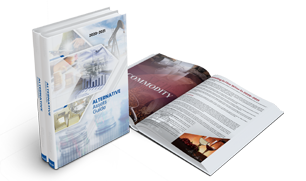
Never miss an important update |
Click to get notified about important updates only. |

99 Alternatives
Opportunities are Infinite
LEPO is part of well-defined investment portfolios that provides a sophisticated option style to suit investors' broader risk profiles.
It stands for low exercise price options and is like the forward purchases or a forward sale of shares.
There is a difference between LEPO and standard exchange-traded structured products.
The main difference is that ETOs are American-style call options, and LEPOs are European-style.
It does not pay the full amount of the premium at the start. The investor pays the margin and the balance during the transaction.
The exercise price is approximately 1 cent for a share or $10 for a contract.
Some of the features are -
It gives the right to buy in conditions where you agree to buy a certain number of shares, and it may indicate that one contract is equal to 100 at a specific future date in return for the payment of premium and exercise price.
It gives exposure to a type of stock, and the key advantage is that you pay just the margin upfront instead of the value of the full stock.
The traders can choose to close any time before the expiry of the term by simply selling the series as per initial rates or buying the same series at the initially sold rates.
The time when you agree to sell– you agree to sell a specific number of shares at a future date in return for receipt of premium and exercise price.
There are many advantages to using LEPO.
It offers the benefit of leverage, a cash-money-efficient method of trading.
There is no risk of early exercise and physical delivery of shares.
It works as a good proxy for share trading and offers ease of account opening and availability of offsets on margin.
It provides the ability to lodge non-cash collateral.
It provides a great method to leverage your share market position. For experienced investors, it provides a method to trade as per the views of the investors on short-term movement in the underlying shares.
Unlike other options, there is only one price in it, and it requires ongoing margin payments from both seller and buyer.
The exercise is not automatic unless the arrangement is made with a broker for automatic exercise.
It is available as a call option and does not require an amount equal to the full premium to be paid when buying.
In such exposures, you do not get dividends directly; the dividend's value is factored into the price, which is advantageous to investors who cannot use franking credits.
From liquifying your asset to any time you want to have...
Impact investing in real estate is a growing trend with...
Whether buying your first home or selling your...
What is better Silver or Sterling Silver? We all know...
How much do Twitch Streamers Make? Man is fun-loving...
Shorting a stock is one of the most outstanding...
Copyright © 2025 99alternatives Ltd. All rights reserved.
Designed and Managed by Mont Digital


